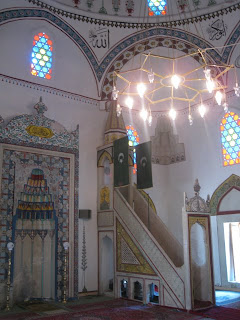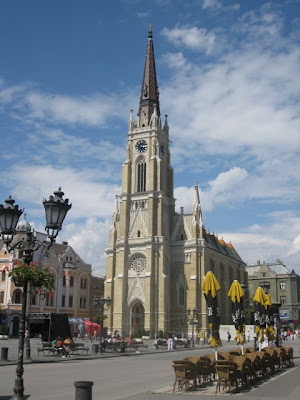Sarajevo, the capital of Bosnia and Hercegovina, is a riverside city nestled in a valley below steep green hills. Over its long and colorful history, Sarajevo has been inhabited by Illyrians, Greeks, Romans, Slavs, Byzantines, Ottomans, Venetians and Austro-Hungarians.
Centuries of Ottoman rule brought Islam to Sarajevo, along with many traditional Turkish influences that remain to this day. Under the 19th century Austro-Hungarian rule, the existing Turkish-style buildings were preserved amid the new European-style architecture. The resulting fusion of East and West is both beautiful and fascinating.
While it still bears many scars from the Bosnian War of the early 1990s, Sarajevo is a friendly and vibrant city that inevitably charms visitors.

One of Sarajevo's many quaint bridges over the Miljacka River

The National Library (previously the Town Hall) was built in the 19th century in the pseudo-Moorish style by the Austro-Hungarians. The building was severely damaged during the war and is still under reconstruction.

A busy square in the heart of Bascarsija, Sarajevo's Old Town. The Old Town dates back to the 15th century during the period of Ottoman rule, and its narrow cobblestone streets are lined with craft shops and coffee houses.The sebilj (kiosk-shaped public fountain) in this photo was built in the 19th century in pseudo-Moorish style and is a symbol of Sarajevo.

A busy street in the "new" (Austro-Hungarian era) part of town

Sarajevo at sunset, as seen from the old city walls above the town
 The view of the monastery from the winding road below
The view of the monastery from the winding road below After a fire destroyed most of the complex, the monastery was rebuilt in the 1920s. The beautiful 17th century frescoes within the monastery's two cave-chapels survived the fire, but sadly, photos are not allowed.
After a fire destroyed most of the complex, the monastery was rebuilt in the 1920s. The beautiful 17th century frescoes within the monastery's two cave-chapels survived the fire, but sadly, photos are not allowed. Prayer cards for sale in the monastery courtyard
Prayer cards for sale in the monastery courtyard A closer view of the monastery
A closer view of the monastery Looking out over the Zeta River Valley from the monastery courtyard
Looking out over the Zeta River Valley from the monastery courtyard The monastery at night. Basic lodging (mats and blankets) is provided free of charge for pilgrims and visitors.
The monastery at night. Basic lodging (mats and blankets) is provided free of charge for pilgrims and visitors.



















































